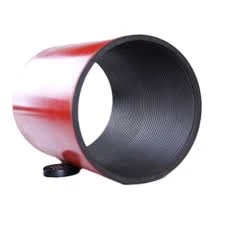- Afrikaans
- Albanian
- Amharic
- Arabic
- Armenian
- Azerbaijani
- Basque
- Belarusian
- Bengali
- Bosnian
- Bulgarian
- Catalan
- Cebuano
- Corsican
- Croatian
- Czech
- Danish
- Dutch
- English
- Esperanto
- Estonian
- Finnish
- French
- Frisian
- Galician
- Georgian
- German
- Greek
- Gujarati
- Haitian Creole
- hausa
- hawaiian
- Hebrew
- Hindi
- Miao
- Hungarian
- Icelandic
- igbo
- Indonesian
- irish
- Italian
- Japanese
- Javanese
- Kannada
- kazakh
- Khmer
- Rwandese
- Korean
- Kurdish
- Kyrgyz
- Lao
- Latin
- Latvian
- Lithuanian
- Luxembourgish
- Macedonian
- Malgashi
- Malay
- Malayalam
- Maltese
- Maori
- Marathi
- Mongolian
- Myanmar
- Nepali
- Norwegian
- Norwegian
- Occitan
- Pashto
- Persian
- Polish
- Portuguese
- Punjabi
- Romanian
- Russian
- Samoan
- Scottish Gaelic
- Serbian
- Sesotho
- Shona
- Sindhi
- Sinhala
- Slovak
- Slovenian
- Somali
- Spanish
- Sundanese
- Swahili
- Swedish
- Tagalog
- Tajik
- Tamil
- Tatar
- Telugu
- Thai
- Turkish
- Turkmen
- Ukrainian
- Urdu
- Uighur
- Uzbek
- Vietnamese
- Welsh
- Bantu
- Yiddish
- Yoruba
- Zulu
Understanding Bull Plug Pressure Ratings for Optimal Performance in Industrial Applications
Understanding Bull Plug Pressure Ratings A Comprehensive Guide
In various industrial applications, particularly in the oil and gas sector, the need for reliable pressure control systems is paramount. One crucial component in these systems is the bull plug, which is used to seal the flow of fluids in pipelines and prevent leaks. Understanding bull plug pressure ratings is essential for ensuring operational safety and efficiency. This article delves into the significance of bull plug pressure ratings, factors influencing them, and the implications for their application.
What is a Bull Plug?
A bull plug, often referred to as a bull plug valve, is a type of valve used in pipelines to temporarily block the flow of liquids or gases. These plugs are typically made of strong materials that can withstand extreme pressure and corrosive environments. They are installed in various parts of a pipeline system, serving as a critical component for maintenance operations, system testing, and shutdown procedures.
The Importance of Pressure Ratings
Pressure ratings represent the maximum pressure a component can safely handle without risking failure. For bull plugs, these ratings are crucial as they determine the situations in which the plugs can be effectively and safely utilized. Exceeding a bull plug’s pressure rating can lead to catastrophic failures, including leaks, and in severe cases, explosions, which can endanger personnel and the environment.
Factors Influencing Bull Plug Pressure Ratings
1. Material Composition The materials used in constructing bull plugs significantly influence their pressure ratings. Common materials include carbon steel, stainless steel, and various alloys, each offering different levels of strength and corrosion resistance.
2. Design Specifications The design and engineering of the bull plug are tailored to meet specific pressure requirements. Features such as thickness, shape, and the method of sealing all play a role in determining the plug's overall pressure rating.
3. Operating Temperatures The pressure rating of bull plugs can also be affected by the temperature at which they operate. High temperatures can weaken materials, potentially lowering the effective pressure rating of a bull plug.
bull plug pressure rating

4. Testing Standards Various industry standards govern the testing and certification of bull plugs. Organizations such as the American Society of Mechanical Engineers (ASME) and the American Petroleum Institute (API) provide guidelines to ensure that pressure ratings are determined accurately and consistently.
Best Practices for Selecting Bull Plugs
When selecting bull plugs for any application, it is essential to consider the specific pressure ratings required for the project. Here are a few best practices to ensure proper selection and use
1. Identify Application Needs Clearly define the operating conditions, including the type of fluid being contained, the pressure and temperature ranges, and any potential corrosive factors.
2. Consult Manufacturer Specifications Always refer to the technical documentation provided by manufacturers, which includes detailed pressure ratings and any limitations related to material properties.
3. Regular Maintenance and Inspection It is vital to establish a routine maintenance schedule that includes inspections of bull plugs to identify signs of wear, corrosion, or other issues that may affect their performance and pressure ratings.
4. Training for Personnel Ensure that personnel involved in the installation and maintenance of bull plugs are adequately trained in safety protocols and understand the importance of adhering to specified pressure ratings.
Conclusion
The safe and effective application of bull plugs hinges on a thorough understanding of their pressure ratings. These ratings are not merely arbitrary numbers; they are critical indicators of the limits within which these components can be safely operated. By considering material, design, operating conditions, and industry standards, engineers and technicians can select the appropriate bull plugs to ensure the integrity and safety of their fluid handling systems. Ultimately, prioritizing proper pressure ratings not only protects investments but also safeguards human life and the environment.
-
Tubing Pup Joints: Essential Components for Oil and Gas OperationsNewsJul.10,2025
-
Pup Joints: Essential Components for Reliable Drilling OperationsNewsJul.10,2025
-
Pipe Couplings: Connecting Your World EfficientlyNewsJul.10,2025
-
Mastering Oilfield Operations with Quality Tubing and CasingNewsJul.10,2025
-
High-Quality Casing Couplings for Every NeedNewsJul.10,2025
-
Boost Your Drilling Efficiency with Premium Crossover Tools & Seating NipplesNewsJul.10,2025







